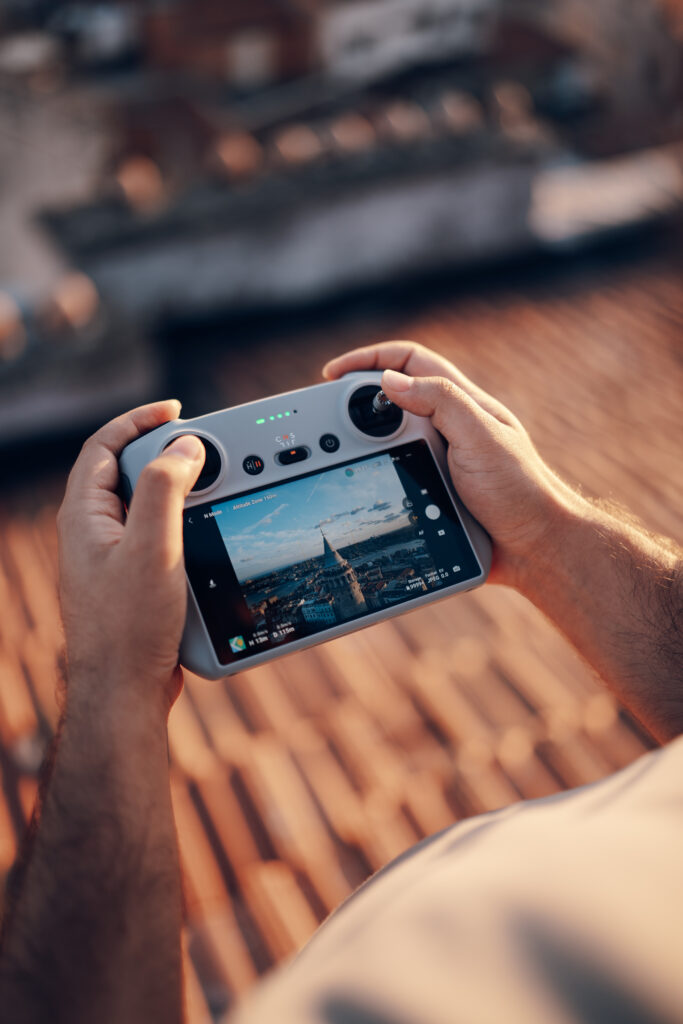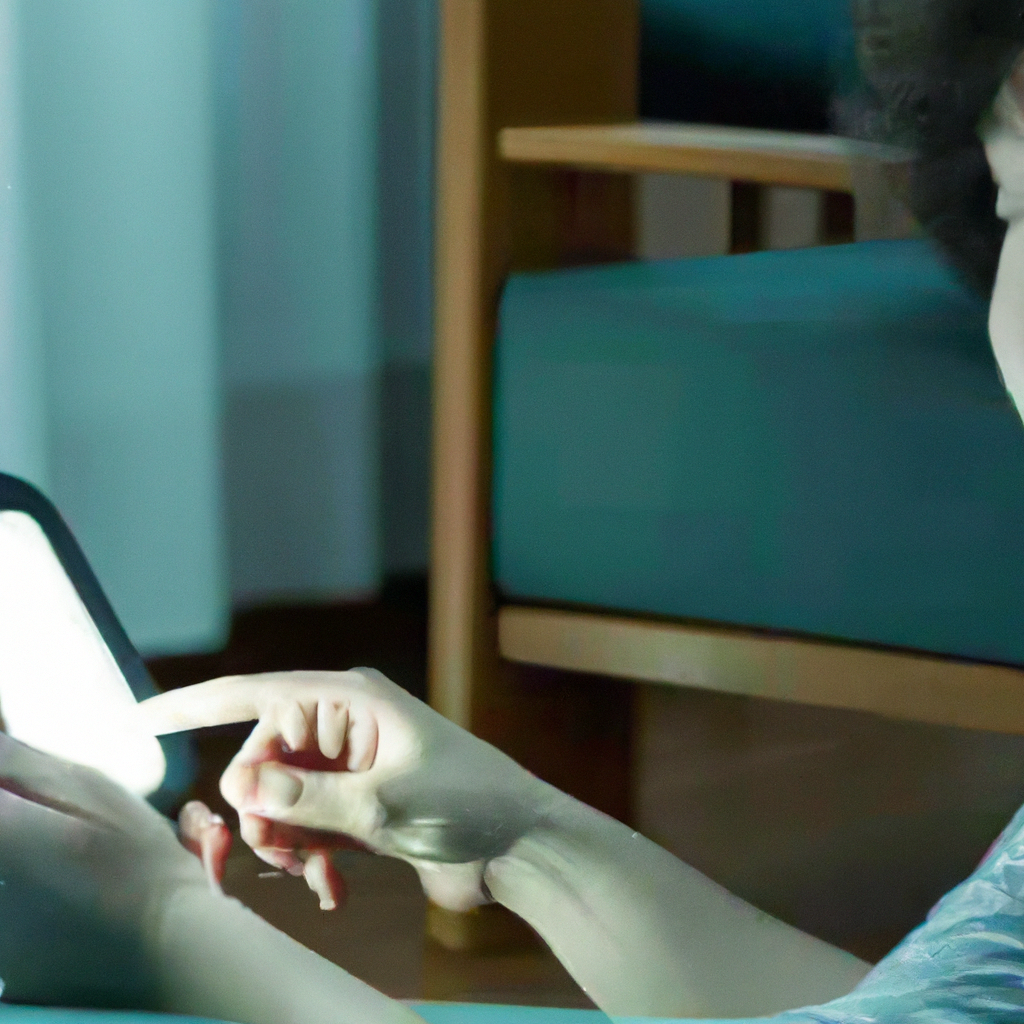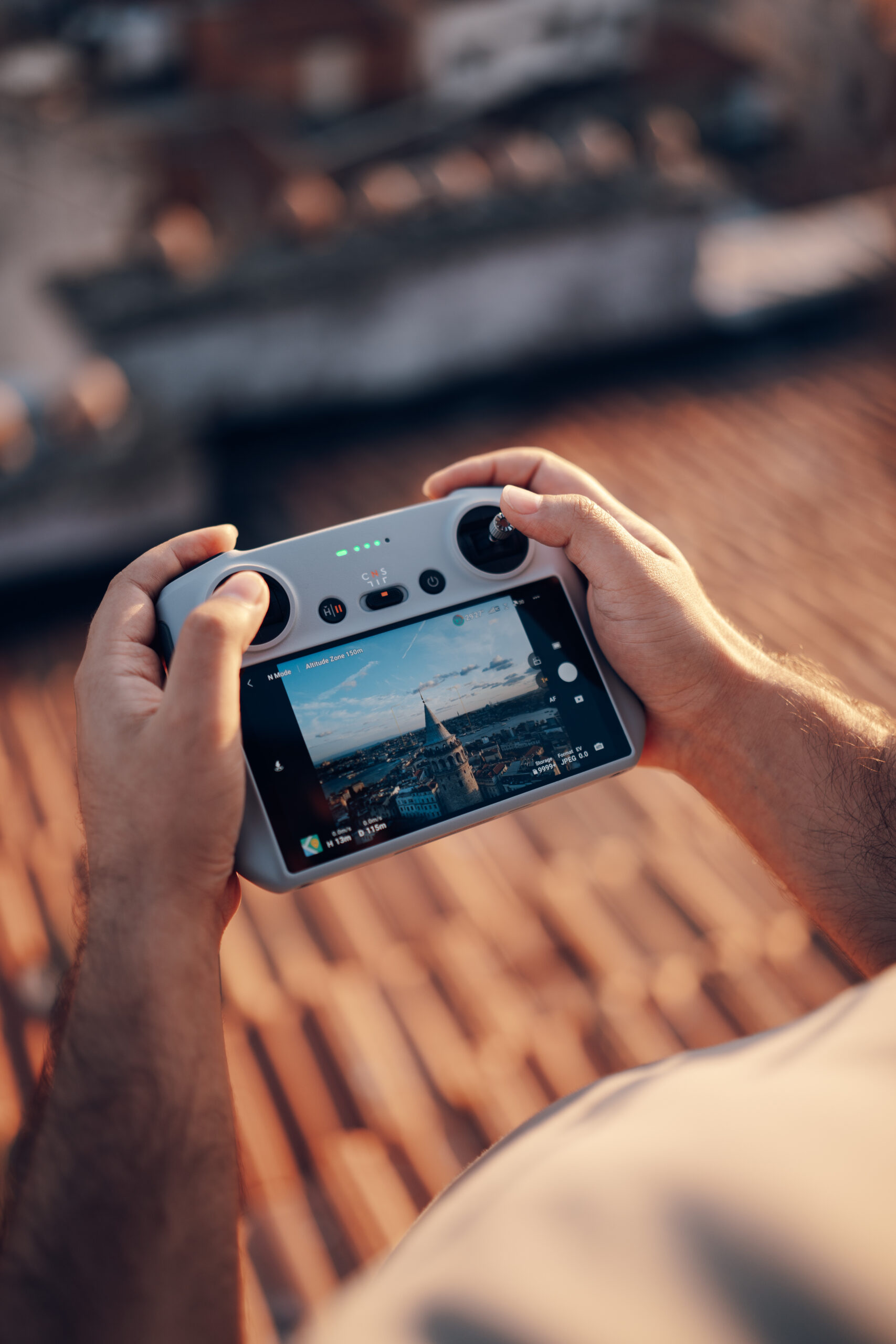Imagine having the ability to control every aspect of your bedroom with just the sound of your voice. This revolutionary technology aims to provide individuals with disabilities the power to effortlessly manage their environment, right from the comfort of their beds. From adjusting the lighting and temperature to operating electronic devices, a voice-controlled smart bedroom is a game-changer in making daily tasks more accessible and convenient. In this article, we will explore the step-by-step process of setting up this innovative system, ensuring that individuals with disabilities can enjoy a more independent and comfortable living experience.

1. Assessing the Needs of Individuals with Disabilities
When it comes to setting up a voice-controlled smart bedroom for individuals with disabilities, it is essential to first assess their specific needs and challenges. Understanding these challenges is the key to finding the right technology and creating a customized setup that addresses their requirements.
1.1 Understanding the Challenges
Individuals with disabilities face unique challenges when it comes to accessing and controlling their environment. For some, mobility limitations may restrict their ability to physically interact with devices and appliances in their bedroom. Others may have sensory impairments that require alternative methods of communication or interaction. By empathizing with these challenges, we can develop solutions that improve their quality of life and independence.
1.2 Identifying Specific Requirements
Once you have a thorough understanding of the challenges individuals with disabilities face, it is crucial to identify their specific requirements. This involves considering factors such as the type and severity of the disability, any specific accommodations needed, and personal preferences. By taking these requirements into account, you can ensure that the voice-controlled technology chosen is tailored to their individual needs, making their daily activities more accessible and manageable.
2. Choosing the Right Voice-Controlled Technology
With a clear understanding of the needs and challenges, it’s time to explore the various voice-controlled technology options available. Finding the right voice assistant platforms and compatible devices is crucial for creating a seamlessly integrated smart bedroom setup.
2.1 Exploring Voice Assistant Platforms
There are several voice assistant platforms available, such as Amazon Alexa, Google Assistant, and Apple Siri. Each platform has unique features and capabilities, so it’s important to research and select the one that aligns with the individual’s specific requirements. These voice assistants enable hands-free control of various devices, allowing individuals with disabilities to operate their bedroom environment simply by using their voice.
2.2 Compatibility with Existing Devices
Before investing in voice-controlled technology, it’s necessary to ensure that it is compatible with the existing devices in the bedroom. From smart bulbs to thermostats, it’s essential to check if these devices can be integrated with the chosen voice assistant platform. Compatibility ensures a seamless user experience and allows individuals to control all aspects of their bedroom environment using a single voice-controlled system.
2.3 Customizable Voice Commands
Customizable voice commands are an important consideration when choosing voice-controlled technology. The ability to personalize commands allows individuals with disabilities to create a setup that suits their unique needs and preferences. This customization ensures that the voice-controlled system is intuitive and easy to use, making it a valuable tool for individuals with varying levels of physical or cognitive abilities.

3. Integrating Voice-Controlled Devices
Once the right voice-controlled technology is chosen, it’s time to integrate various devices within the bedroom. From lighting systems to entertainment devices, these integrations enhance accessibility and convenience for individuals with disabilities.
3.1 Smart Lighting Systems
Smart lighting systems can be controlled using voice commands, making it easier for individuals with disabilities to turn lights on and off, adjust brightness, and even change colors. This integration of voice control eliminates the need to manually operate switches or adjust lighting fixtures, providing an accessible and customizable lighting experience.
3.2 Automated Curtains and Blinds
Automated curtains and blinds can significantly benefit individuals with mobility limitations. By integrating these devices with voice-controlled technology, individuals can control the opening and closing of curtains and blinds, allowing them to adjust the natural light and privacy in their bedroom with ease.
3.3 Voice-Activated Television and Entertainment
Voice-activated television and entertainment systems enable individuals with disabilities to control their favorite shows, movies, or music just by using their voice. This integration eliminates the need for complex remote controls or physical interaction with the devices, making entertainment more accessible and enjoyable within the bedroom.
3.4 Temperature and Climate Control
Maintaining a comfortable temperature in the bedroom is important for individuals with disabilities. Voice-controlled thermostats or climate control systems allow individuals to adjust the temperature, control fans or air conditioning, and create a comfortable sleeping environment without the need to physically interact with the controls.
3.5 Security and Safety Features
Integrating voice-controlled security and safety features enhance the overall accessibility and peace of mind in the bedroom. From voice-activated door locks to smoke detectors and emergency call systems, these technologies enable individuals with disabilities to ensure their safety and security without relying on physical keys or manual interactions with safety devices.
4. Creating a Customized Voice-Controlled Bedroom Setup
To truly meet the needs of individuals with disabilities, it is important to create a customized voice-controlled bedroom setup. This involves considering the unique requirements and preferences of the individual and incorporating various assistive features and technologies.
4.1 Setting Up a Smart Bed
A smart bed can be a game-changer for individuals with disabilities. These beds often come with voice-controlled adjustments for height, inclination, and other comfort settings. By integrating a voice-controlled bed into the bedroom setup, individuals can independently and effortlessly adjust their sleeping position without the need for physical assistance.
4.2 Voice-Activated Accessibility Features
Customizing voice-activated accessibility features within the bedroom setup is crucial to ensuring independence and ease of use for individuals with disabilities. For example, voice-controlled door openers, accessible switches, and smart sockets can enhance accessibility and enable individuals to control various electronic devices within their reach.
4.3 Smart Storage Solutions
Incorporating smart storage solutions within the voice-controlled bedroom setup maximizes convenience and accessibility. Voice-activated closets, drawers, and shelving systems allow individuals to easily locate and retrieve items without the need for physical exertion or assistance. These smart storage solutions ensure that all essentials are within reach and efficiently organized.

5. Considering Assistive Technologies
While voice-controlled technology plays a significant role in creating an accessible bedroom, other assistive technologies should also be considered to provide a comprehensive solution for individuals with disabilities.
5.1 Mobility-Assistive Devices
Mobility-assistive devices, such as electric wheelchairs or mobility scooters, can greatly enhance independence and accessibility within the bedroom. Integrating voice control with these devices enables individuals to operate and maneuver them using voice commands, further eliminating physical barriers and enhancing mobility.
5.2 Voice-Controlled Medical Monitoring
For individuals with medical conditions or disabilities requiring continuous monitoring, voice-controlled medical monitoring systems can be invaluable. These systems allow individuals to check vital signs, medication reminders, and even contact medical professionals when necessary, just by using their voice. By integrating voice control into medical monitoring, individuals can manage their health with ease and convenience.
6. Ensuring a User-Friendly Experience
To make the voice-controlled smart bedroom truly effective, it is essential to prioritize usability and optimize the user experience. Simplifying voice commands, optimizing voice recognition, and offering training for voice control are key considerations.
6.1 Simplified Voice Commands
Simplifying voice commands is crucial for individuals with disabilities to easily and effectively control their bedroom environment. It is important to ensure that the voice commands required are straightforward, intuitive, and tailored to the individual’s needs.
6.2 Optimizing Voice Recognition
Optimizing the voice recognition capabilities of the chosen voice assistant platform is essential for an efficient and frustration-free user experience. Regularly updating the voice assistant’s software, training it to recognize unique speech patterns or accents, and minimizing background noise interference can significantly enhance the accuracy and reliability of voice recognition.
6.3 Training for Voice Control
Providing training and guidance on using the voice-controlled setup can empower individuals with disabilities to maximize the benefits of the technology. This training can include educating them on how to use voice commands effectively, troubleshooting common issues, and staying up-to-date with any new features or updates of the chosen voice assistant platform.

7. Addressing Privacy and Security Concerns
Privacy and security should always be a priority when setting up a voice-controlled smart bedroom. Taking steps to protect personal data and ensure secure voice authentication is essential for peace of mind.
7.1 Data Encryption and Privacy Settings
Ensure that the chosen voice-controlled technology prioritizes data encryption and offers robust privacy settings. It is important to review and understand the privacy policies and features of the chosen platform to ensure that the data collected is safeguarded and used responsibly.
7.2 Voice Authentication Techniques
To prevent unauthorized access to the voice-controlled bedroom setup, voice authentication techniques can be implemented. These techniques use voice biometrics to authenticate users and grant access only to recognized voices. Voice authentication ensures that the system responds solely to the authorized individual’s voice commands, enhancing privacy and security.
8. Customizing Automation and Control Settings
Customization is key to tailoring the voice-controlled smart bedroom to the individual’s preferences and routines. By customizing automation and control settings, individuals can create a personalized and comfortable environment within their bedroom.
8.1 Personalized Sleep Routines
By integrating voice control with sleep-tracking technology, individuals can create personalized sleep routines. Voice commands can be used to adjust lighting, set the ideal room temperature, and even activate soothing sounds or white noise, promoting better sleep and overall well-being.
8.2 Voice-Controlled Room Ambiance
Tailoring the room ambiance using voice commands enhances comfort and relaxation. By adjusting lighting colors, brightness levels, and other ambient features, individuals can create a calming atmosphere that suits their mood and preferences, helping them unwind and create an optimal sleep environment.
8.3 Smart Alarm and Wake-Up Features
With voice-controlled smart alarms, individuals can wake up to personalized routines and gentle alarm tones without the need to fumble with a traditional alarm clock. These alarms can also be programmed to gradually increase lighting levels or play energizing music, promoting a smooth and refreshing wake-up experience.

9. Incorporating Voice-Controlled Home Assistants
Expanding voice control beyond the bedroom can further enhance independence and accessibility. Integrating voice-controlled home assistants throughout the living spaces allows individuals to control various aspects of their environment.
9.1 Extending Voice Control Beyond the Bedroom
By extending voice control to other rooms in the house, individuals with disabilities can seamlessly navigate their living spaces. From adjusting lighting in the living room to controlling kitchen appliances, voice-controlled home assistants create a cohesive and accessible smart home experience.
9.2 Integration with Smart Home Ecosystems
Integrating voice-controlled technology with existing smart home ecosystems further enhances convenience and accessibility. By connecting various devices and systems, individuals can control multiple aspects of their home environment simultaneously, promoting a more inclusive and connected living experience.
10. Future Possibilities and Emerging Innovations
The field of voice-controlled technology for individuals with disabilities continues to evolve, with exciting possibilities and emerging innovations on the horizon.
10.1 Advanced Artificial Intelligence Algorithms
Advancements in artificial intelligence algorithms hold promise for improving voice recognition and enhancing the capabilities of voice-controlled systems. From more accurate speech recognition to predicting user intent, these algorithms can make voice-controlled technology even more intuitive and responsive.
10.2 Voice-Activated Smart Furniture
Imagine furniture that can be controlled entirely through voice commands. Voice-activated smart furniture is an emerging innovation that seeks to provide individuals with disabilities with greater control and autonomy over their living spaces. From adjustable desks to voice-controlled recliners, this technology streamlines daily activities and enhances accessibility within the home.
10.3 Enhanced Voice Control for Remote Assistance
Voice-controlled technology can play a significant role in remote assistance for individuals with disabilities. With advancements in voice control, individuals can interact with remote caregivers or healthcare professionals through voice commands, allowing for real-time communication, assistance, and support from the comfort of their own bedroom.
In conclusion, setting up a voice-controlled smart bedroom for individuals with disabilities requires a comprehensive understanding of their specific needs and challenges. By choosing the right technology, integrating voice-controlled devices, considering assistive technologies, ensuring a user-friendly experience, addressing privacy and security concerns, customizing automation settings, incorporating voice-controlled home assistants, and being open to future possibilities and innovations, it becomes possible to create a safe, accessible, and empowering environment that enhances the quality of life for individuals with disabilities.
